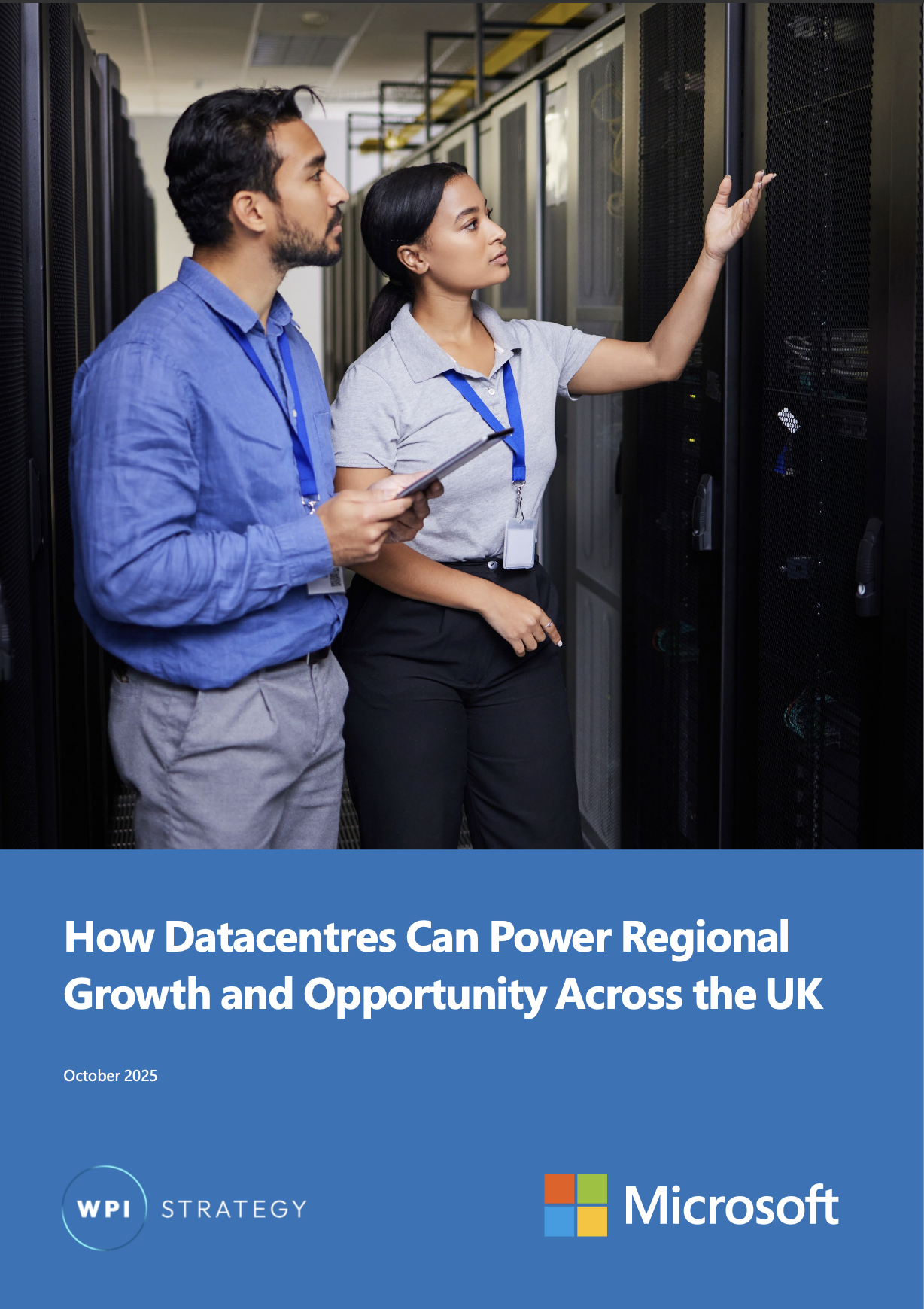How Datacentres Can Power Regional Growth and Opportunity Across the UK
A new report from WPI Strategy, commissioned by Microsoft, finds that datacentres are ideally placed to drive a new wave of UK re-industrialisation
A new report from WPI Strategy finds that the UK has the capacity to rapidly emerge as a global leader in artificial intelligence (AI) and digital infrastructure, with datacentres at the heart of this transformation.
In 2025, the UK has already attracted around £75 billion in private investment for datacentres, ranking third globally behind only the US and Germany. These facilities provide the computing power that underpins some of the UK’s fastest-growing industries, including life sciences, financial services, and advanced manufacturing, and could unlock £78.1 billion in productivity gains for SMEs by 2035.
The report, commissioned by Microsoft, explores the local and regional benefits of datacentre investment, revealing how these high-tech hubs can revitalise post-industrial communities and support the UK’s transition to a net-zero economy.
The findings make clear that datacentre investment represents a powerful opportunity for “re-industrialisation 2.0”, bringing new jobs, skills, and pride to communities across the UK while powering the technologies of the future.
Unlocking these opportunities quickly requires creating the conditions for faster, smarter delivery of new datacentre infrastructure. This report makes five clear recommendations:
Accelerate the delivery of UK datacentres by tackling blockers
1. Prioritise regulatory coordination to accelerate fast access to the grid
2. Empower planning authorities to make quicker planning decisions, in line with statutory timescales
3. Appoint a Minister dedicated to supporting datacentre infrastructure
Leverage datacentre investment for local economic growth
4. Embed datacentres in regional planning and growth strategies
5. Enhance collaboration across regional government, education providers and industry to boost the local datacentre supply chain

